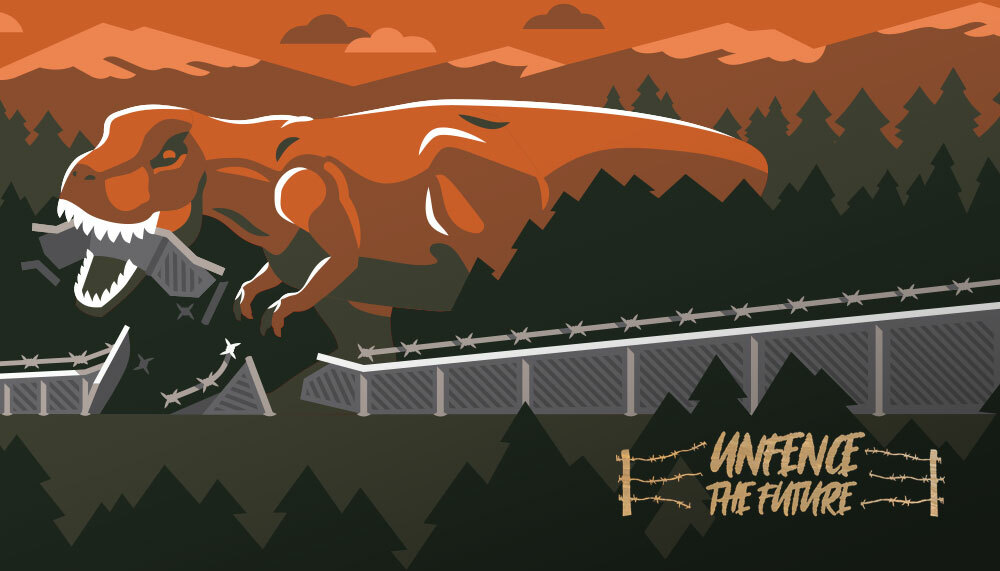Unfence the Future: Taking Down Fortress Conservation and its Enduring Legacy
Wed, Apr 12, 2023
2:00 PM–6:45 PM
This two-day virtual symposium will take place online via Zoom. Please register below.

In conjunction with and in the lead up to our day-long conference “Our Land! Our Nature: A Conference to Decolonize Conservation” on Fri, April 14th at the CUNY Graduate Center, join us on Wed & Thu, April 12 & 13th with our friends and collaborators from The Natural History Museum for “Unfence the Future: Taking Down Fortress Conservation and its Enduring Legacy” a two-day free virtual symposium of panel discussions, poetry, films, and a call to action dedicated to dismantling fortress conservation and its enduring legacy.
April 12 & 13, 2023

During the Great Depression, my Cherokee grandfather sold his Indian allotment so that he could finish college. While he was a student, he was presented with this question on an exam: What was the most defining feature of the American West? He wrote a single word on the page, “fences,” and turned in his exam. Reportedly, he received an A.”
– Hester Dillon (Cherokee) in “Unfencing the Future: Voices On How Indigenous and Non-Indigenous People and Organizations Can Work Together Toward Environmental and Conservation Goals”
Fences create artificial borders between places and mediate the relations between them—what goes in, what comes out, and under what conditions. Without the lines that fences inscribe, there would be no place for border police. Nor could lands be parceled up, claimed as property to be possessed or plundered.
In the history of conservation, the logic of fencing was institutionalized in what critics call “fortress conservation,” a project of drawing boundaries between designated wilderness areas and their outsides, expelling perceived threats to ecological balance–from Indigenous Peoples, to predator species. In the process, habitats have been fragmented, and lifeworlds devastated.
While the science of fortress conservation has been widely discredited, we continue to live in its world. Where did this model come from? Where does it endure? How is it encoded in current laws, policies, and institutional practices—and more broadly, in our ways of seeing, understanding, and relating to the land? And what are activists, communities, and institutions doing to take it down?
Join us for “Unfence the Future: Taking Down Fortress Conservation and its Enduring Legacy” with community leaders, conservationists, legal scholars, geographers, historians, activists, and artists dedicated to dismantling fortress conservation and its enduring legacy.
A Red Natural History launch event, organized by The Natural History Museum and co-sponsored by Survival International and the Center for the Humanities at CUNY Graduate Center.
WEDNESDAY, APRIL 12
2:00 pm – 5:30 pm EST
THURSDAY, APRIL 13
2:00 pm- 6:45 pm EST

This is a 2-day symposium taking place on Zoom–feel free to register for one or both days.
Program
All times below are in EST.
DAY 1 – APRIL 12
2:00 – 2:30 pm: Opening poem and introduction
2:30 – 3:45 pm: Panel Discussion: Conservation by Dispossession
3:45 – 4 pm: Film: The Sacred Remains
4 – 5:15 pm: Panel Discussion: Indigenizing Conservation
DAY 2 – APRIL 13
2 – 2:15 pm: Opening poem
2:15 – 3:30 pm: Panel Discussion: Exterminating Extraction
3:30 – 3:45 pm: Performance
3:45 – 5 pm: Panel Discussion: Defending the Sacred in Law and Policy
5:15 – 5:30 pm: Film: From the Ancestors to the Grandchildren
5:15 – 6:30: Panel Discussion: Unfencing the Future for the Storms to Come
6:30 – 6:45: Closing
Speakers (List in formation)
Andrew Curley (Diné) – assistant professor in the School of Geography, Development, and Environment at the University of Arizona
Ashley Dawson – professor of postcolonial studies in the English department at the Graduate Center, City University of New York and author of People’s Power: Reclaiming the Energy Commons
Billy Fleming – landscape architect, Wilks Family Director of the Ian L. McHarg Center in the Weitzman School of Design, and author of Drowning America: The Nature and Politics of Adaptation
Dina Gilio-Whitaker (Colville Confederated Tribes) – academic, journalist, and author of As Long As Grass Grows: The Indigenous Fight for Environmental Justice from Colonization to Standing Rock
Jon Eagle Sr. (Lakota) – Tribal Historic Preservation Officer, Standing Rock Sioux Tribe
Judith LeBlanc (Caddo) – Executive Director, Native Organizers Alliance
Kai Bosworth – geographer, professor, and author of Pipeline Populism: Grassroots Environmentalism in the 21st Century
Mark Tilsen (Oglala Lakota) – activist and poet
Melissa K. Nelson (Anishnaabe/Métis/Norwegian) – Indigenous ecologist and President of Cultural Conservancy
Natchee Blu Barnd – associate professor of Native American studies at Oregon State University and author of Native Space: Geographic Strategies to Unsettle Settler Colonialism
Rosalyn LaPier (Blackfeeet/Métis) – award winning Indigenous writer, environmental historian, and ethnobotanist
Ruth Miller (Dena’ina Athabaskan) – artist, performer, and climate justice activist

This symposium is a Red Natural History launch event, organized by The Natural History Museum and co-sponsored by Survival International and the Center for the Humanities at CUNY Graduate Center.
Related Events
Conversation
What’s Left for the Animals? A discussion on multispecies politics and anticapitalist resistance




